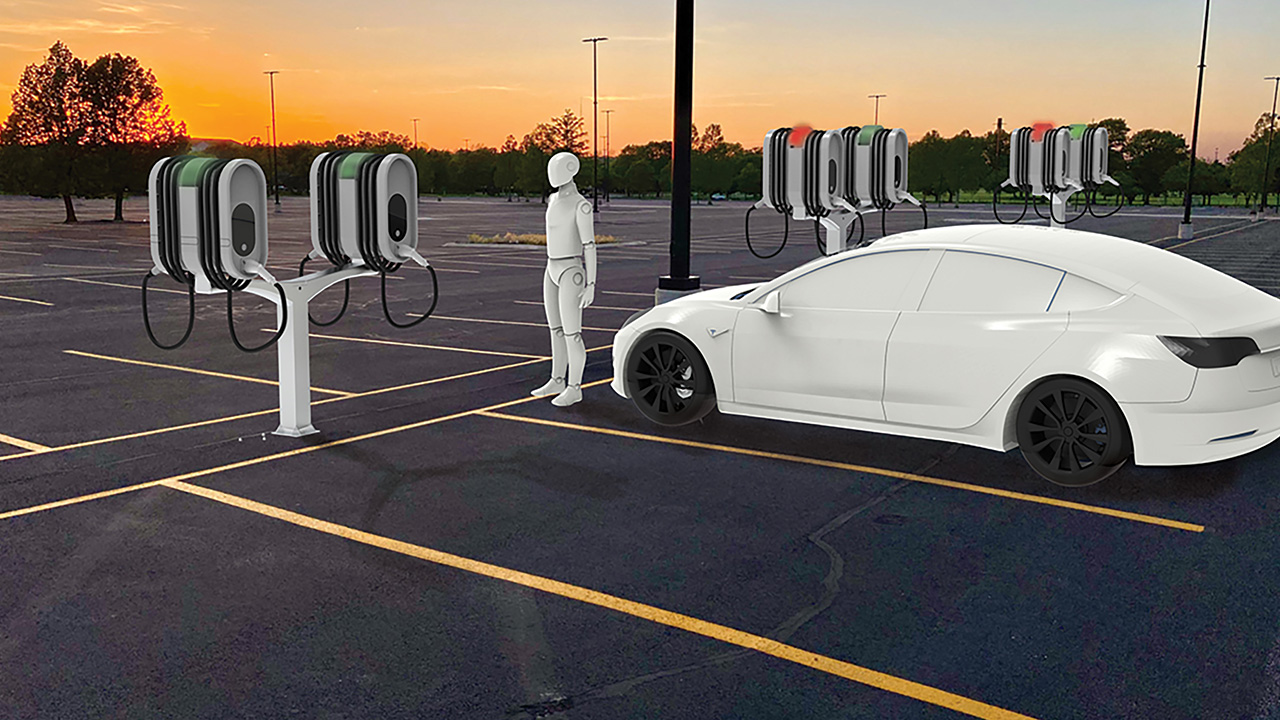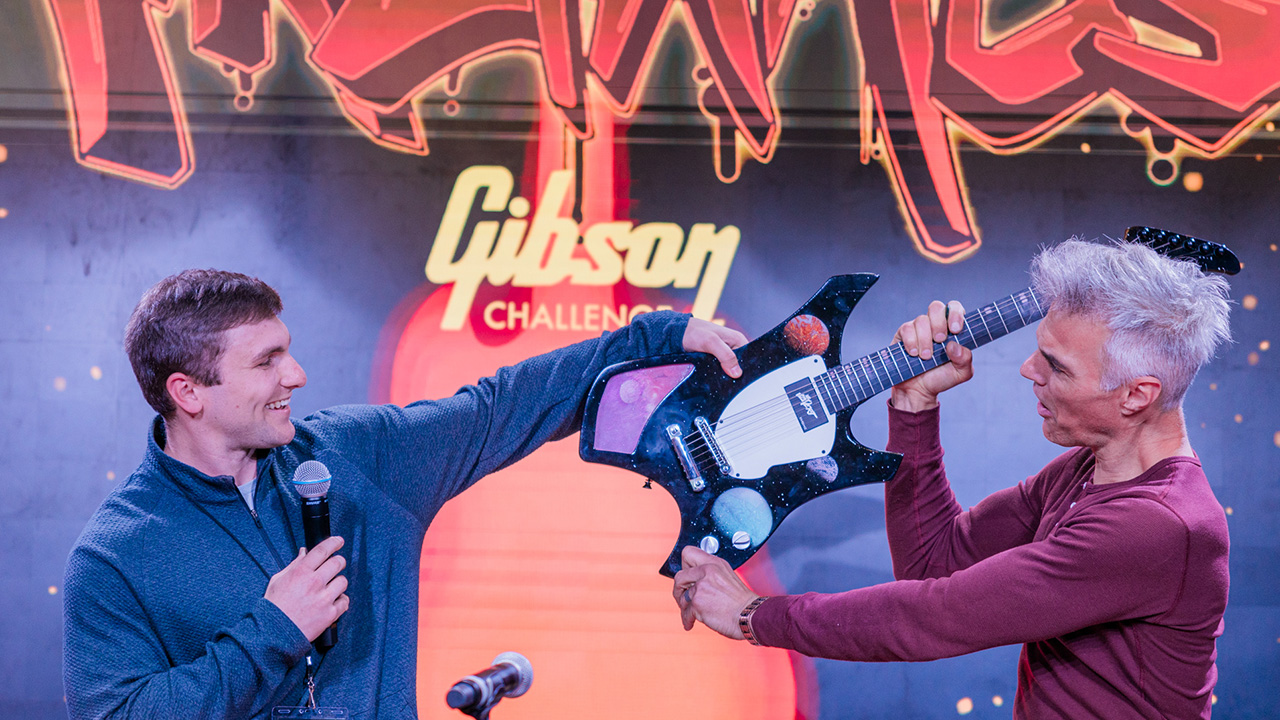content body
Does driving around town with your friends count as research?
For industrial design students at Auburn studying electric vehicle charging stations, the answer is yes.
“The hands-on experience was unforgettable,” said recent graduate Justin Kuznitz. “At first, I didn’t know how extravagant I should make my design, but after driving around and looking at different charging stations, I was able to interpret what was a good design and what wasn’t.”
According to the International Energy Agency, roughly 4.6 million electric vehicles (EVs) were sold in the United States this past year, which means more public charging infrastructure is needed for all those cars on the road. In 2023, Jerrod Windham, a faculty member in Auburn’s Industrial Design program, taught a senior thesis studio sponsored by ABM Industries, a global provider of services across a wide range of industries that includes parking and transportation management. ABM recently entered the market for the design and manufacturing of Level 2 EV charging stations, and the company’s executive team wanted to see if Auburn students could contribute to improvements in their products.
Eager to get exceptional ideas, ABM proposed a contest with cash prizes for the top designs. Alex Drouillard, a product manager at ABM and 2018 graduate of Auburn’s Environmental Design program, said the students’ work exceeded their expectations.
“We went in with the plan to offer only five prizes, but the outcomes were so strong we needed to add in an additional prize to recognize these efforts and to consider them all for our future charger designs,” he said. “Auburn was a great partner throughout, with each student providing exciting new ideas and perspectives.”
Windham knew most of his students had never even ridden in an EV, let alone used a charger, so before the project began, he rented a car and sent his students off to find and use charging stations in Auburn. Lilly Echeverri, now a graduate student in the Master of Industrial Design program, found using the stations helped her realize just how difficult charging can be.
“We all got out and took turns charging,” she said. “We would wrap and unwrap the cable, and we even timed it to figure out why it can be hard for the average person. Some students thought the problem was the stretchability of the cable, and others thought it might be difficult for users to grip.”
Each student developed original product designs based on the problems they experienced while charging and consumer complaints they found online. They started by creating small models with Lego building blocks, progressed to full-sized models made of foam core and then advanced to rendering 3D designs with SolidWorks software.
Echeverri focused on changing the charging station’s screen placement to avoid sun damage and created a design she hoped would be intuitive for workers to install. She also tried to make it easier for users to leave the charging station ready for the next driver.
“One problem I saw was that there was no incentive to put the cable back,” she said. “You’re left with this messy tube on the ground. A lot of us looked into whether a retractable cable could work in this situation.”
The ABM team visited with the students several times throughout the semester, giving feedback, advice and direction. When it came time for final presentations, the company representatives were looking for aesthetically pleasing designs that emphasized ease of installation and ease of use for customers of all abilities, as well as products that are long-lasting, easily repaired and sustainable. When they presented six prizes instead of five, the students knew they had been successful.
“We took on the role of a designer entrepreneur,” Kuznitz said. “The customer came to us, Auburn Industrial Design, in the hopes of finding a solution to a problem, and it was our job to provide that solution. Coming out of the studio, I feel like I gained a little taste of what it felt like to be a designer in the ‘real world.’”
So, the next time you drive by an EV charging station, you might just wonder if it was designed by a student at Auburn.












